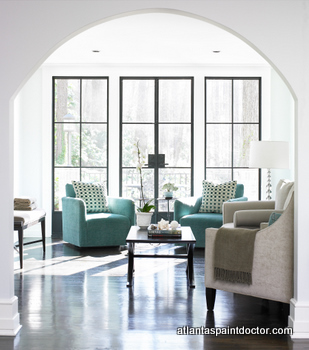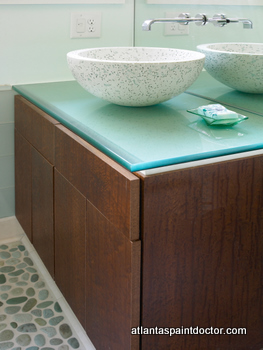
Preparation
A few hours spent preparing your interior room for a new paint color will save a lot of time and headache once you start putting paint on the walls. Preparation for interior rooms means really taking stock of the condition of your walls and other surfaces you plan to paint such as trim.

To spend a great deal of time preparing window trim, door trim and baseboards is the best of the interior painting tips professionals can offer. Fill nail holes and other cracks, scrape off layers of old paints, sand chipped and cracked areas, and, just like with walls, clean, clean, clean.
Taping
Using painting tape to separate walls from trim may be a task most painters dread the most. It takes time and an exacting hand to make sure wall paint doesn’t splash onto the trim or vice versa. After finishing the walls and giving them ample time to dry, reverse the process and tape off the walls from the baseboard and trim and other surfaces you aren’t painting.
 Priming
Priming
Depending on the age, condition and current color of your walls, you might want to consider priming your walls. Dark colors you plan to paint over require priming to cover the dark paint. Older walls that required a lot of patching or prepping will need priming as well to make new paint roll on cleanly and smoothly. If your walls were previously painted with a flat finish paint, you may only need to spot prime places that needed patching.
With these interior painting tips, your next painting job will go quickly and smoothly and give you incredible finished results. Happy painting!

 Priming
Priming